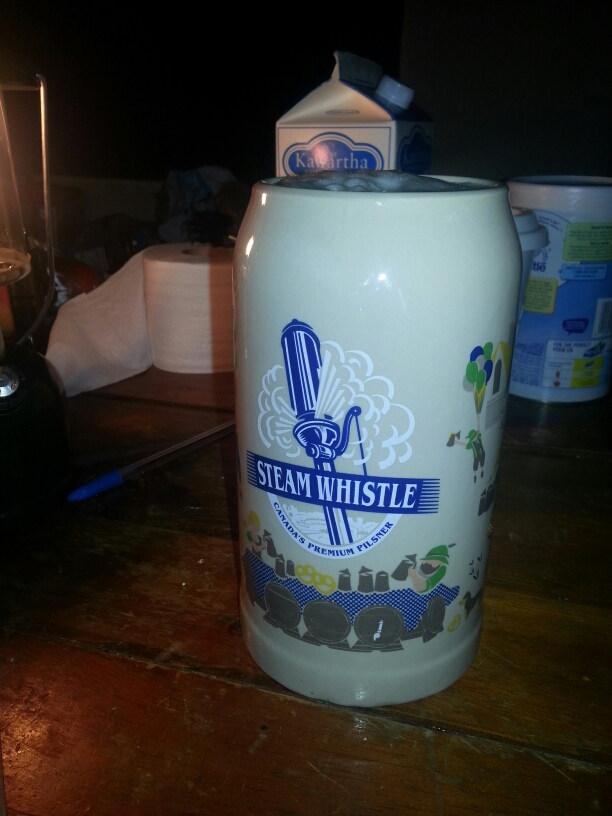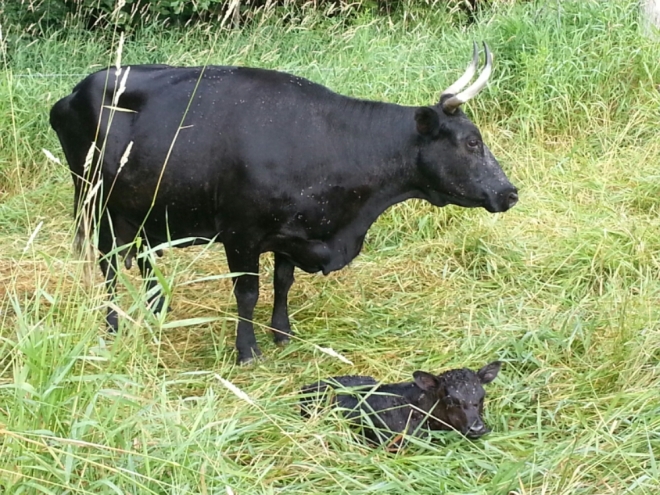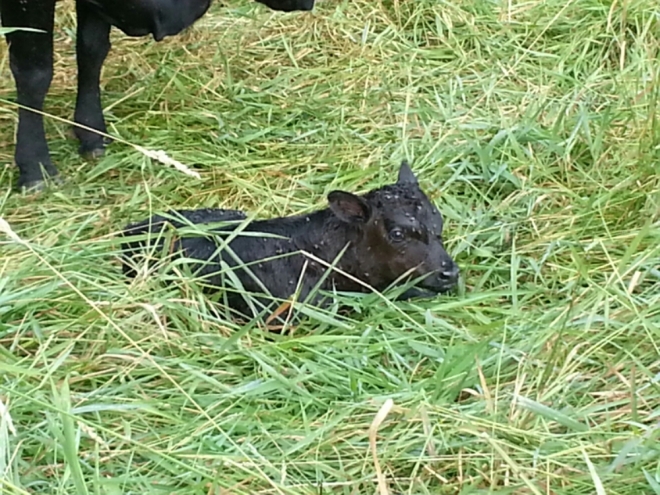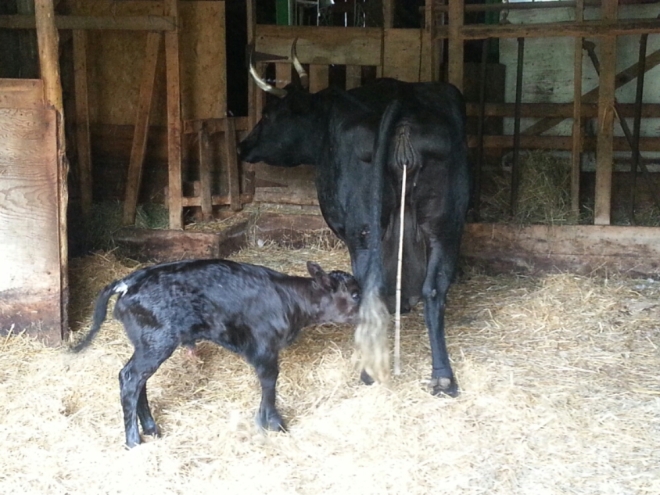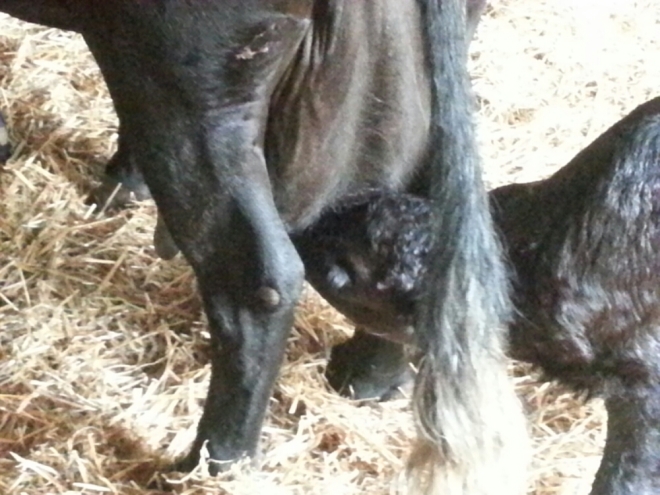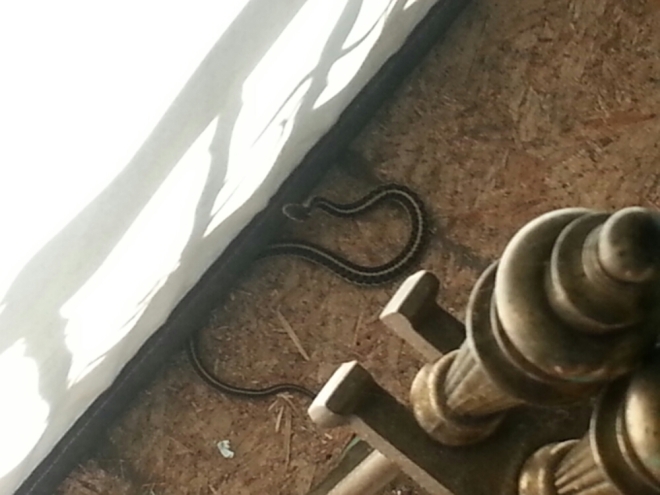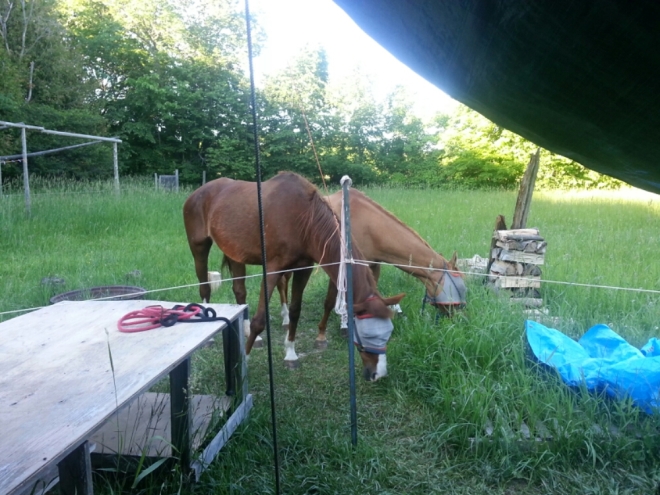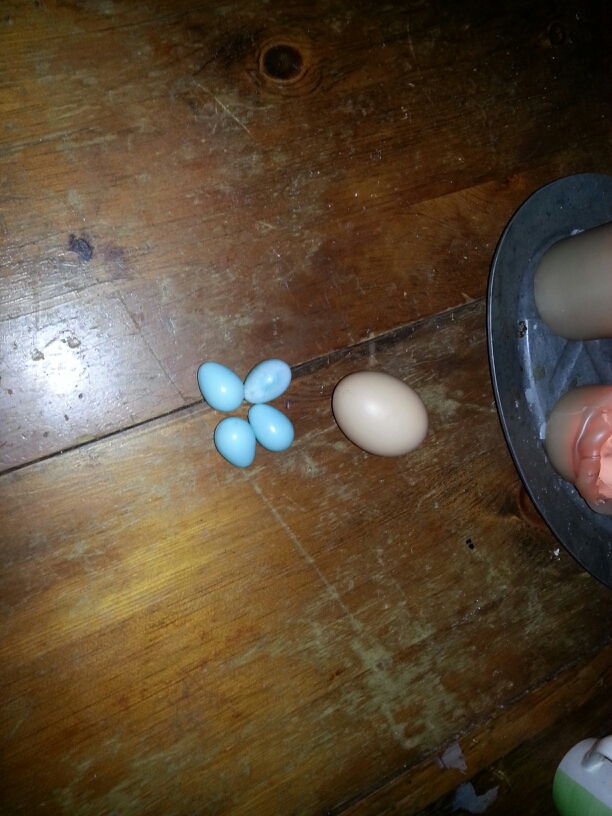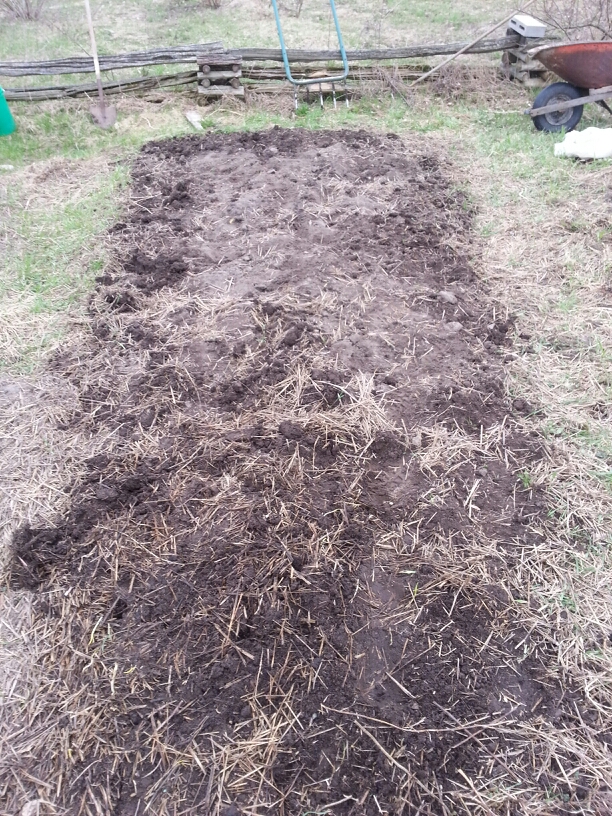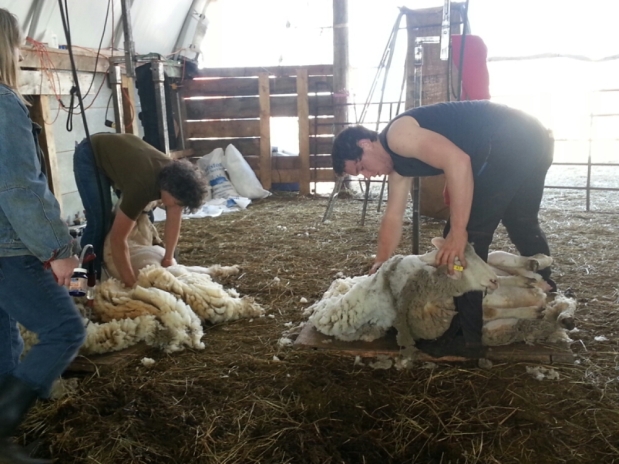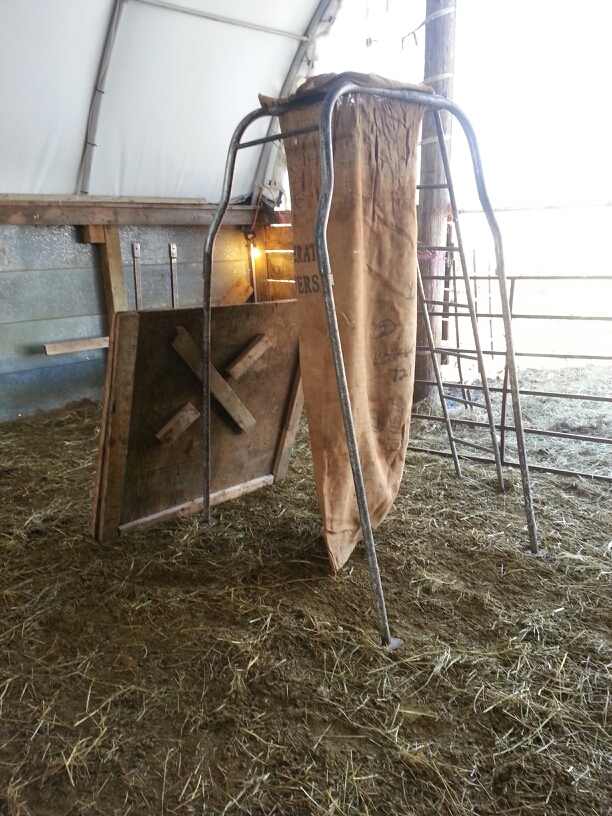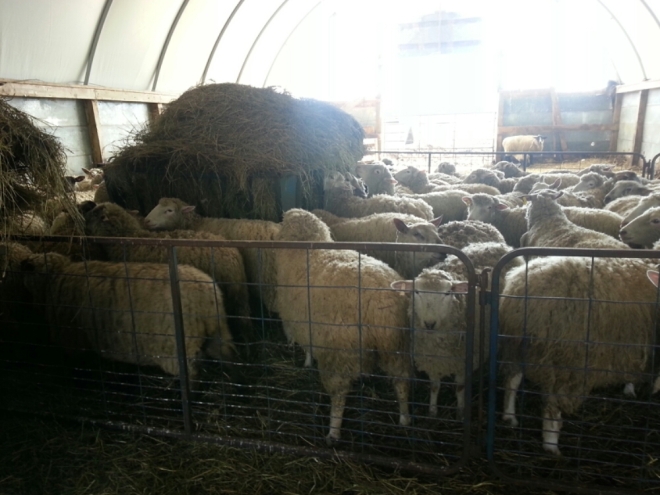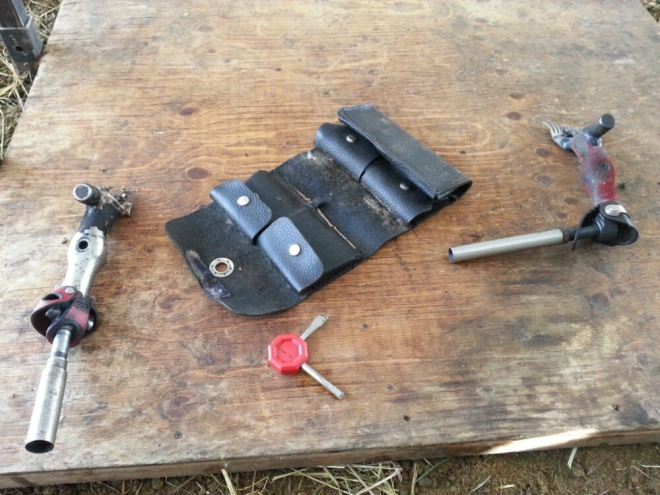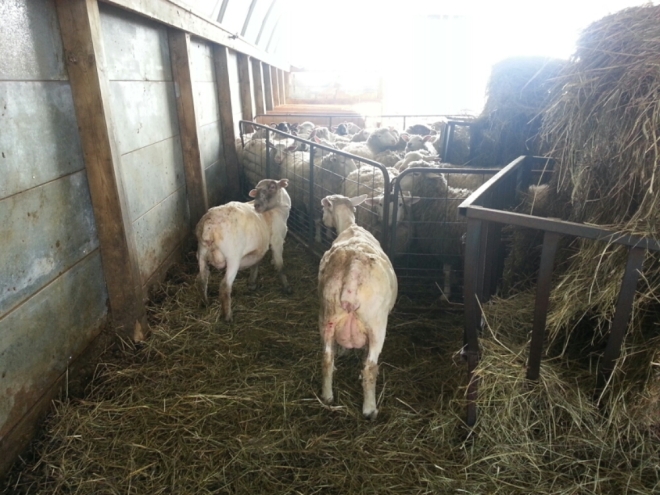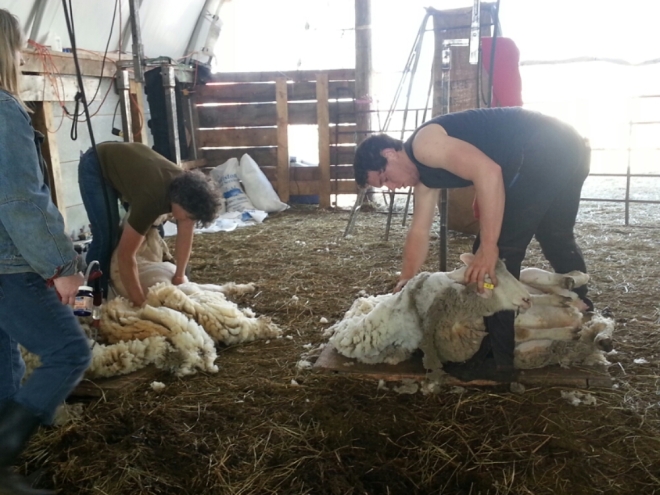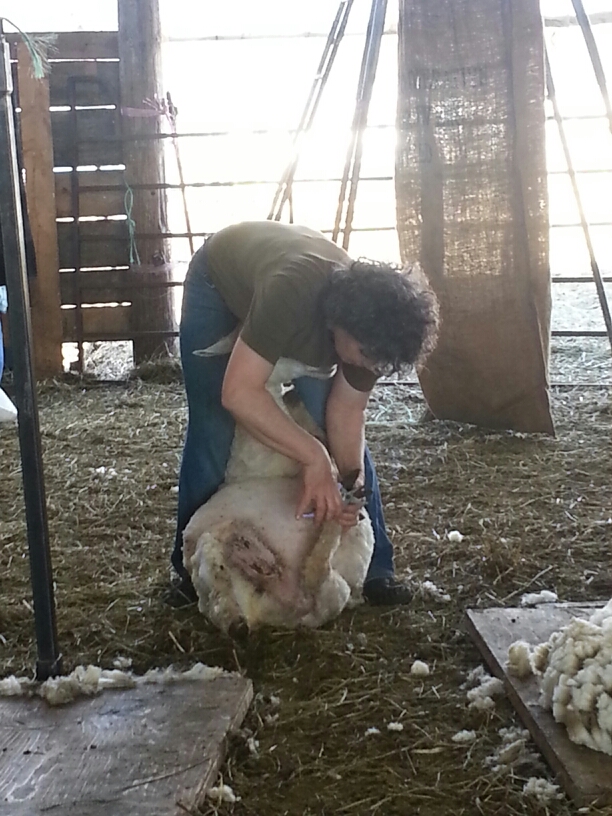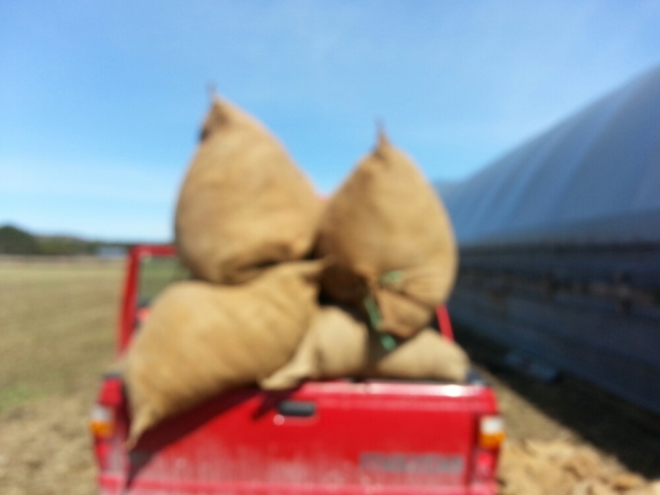So yesterday was a bit of a write off. It rained all day, so I didn’t really do much that was worth photographing. I did end up helping a neighbour farmer a bit. He is moving farms so I was helping him empty out the last bits from his barn onto a trailer.
The good news though is that April showers bring May flowers…
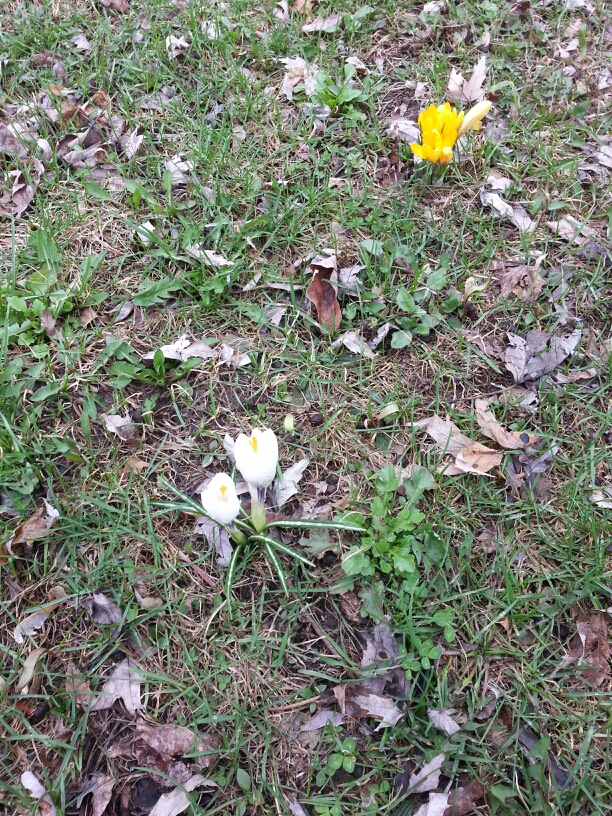
Now, for today… as you may remember, a couple of days ago, I left a garden plot looking like this…
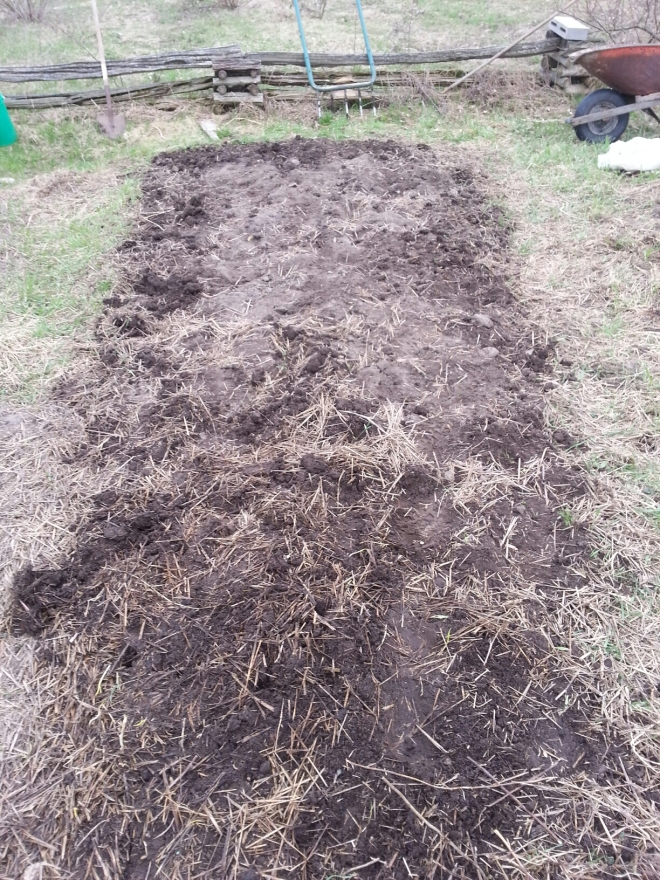
This is our cucumber bed and was quite boring. So today, I continued…
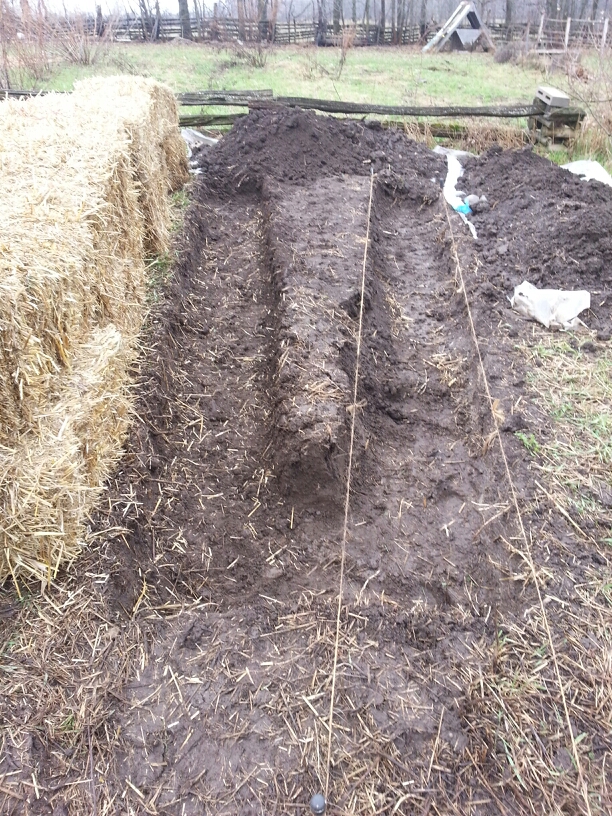
This is a technique that Eliot Coleman mentions in his book “Four Season Harvest.” He’s never actually tried it himself but rather heard about the idea from a French market gardener. First, you dig a trench about a foot deep and a strawbale width wide. We have two trenches forming a “V” since that’s the shape of the bed.
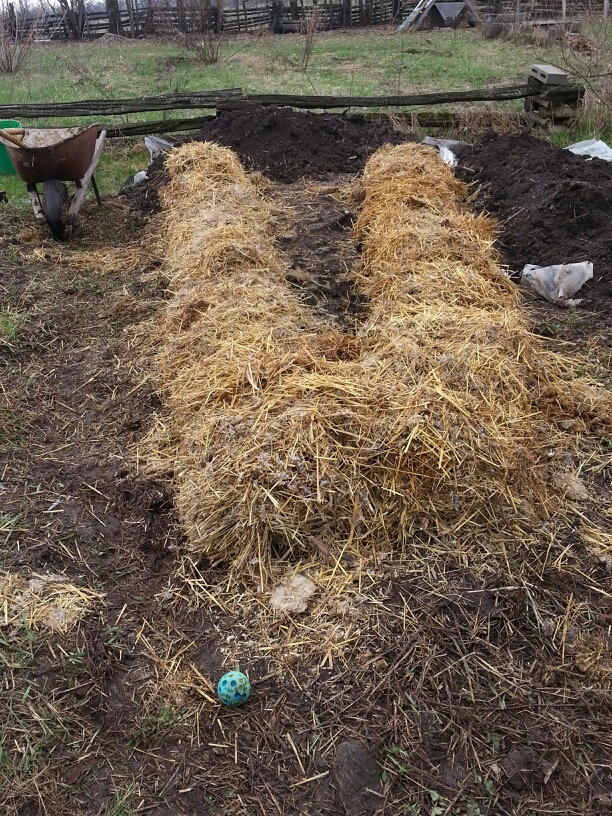
Then you place straw bales in the trench, sprinkle blood meal on it and cover it with guano. We didn’t have ready access to guano, so I opted for some chicken bedding instead. The blood meal adds a good supply of nitrogen and iron, while the bedding is a good mix of nitrogen and carbon. The hope is that this will begin composting rapidly. This composting should produce heat, allowing us to get our cucumbers started quickly. Of course, this is all an experiment. Perhaps the leftover seeds in the chicken bedding will sprout leaving me with way too much hoeing. Perhaps the nitrogen will burn the plants killing them quickly. We shall see.
Just before lunchtime, I finished my work on this bed. I was supposed to water it, but looking at the sky, figured I’d let Mother Nature do that work for me. She didn’t disappoint and provided a very good soaking. Later, we will move the soil back onto the bed and plant the cucumbers.
Of course, being on a farm offers frequent digressions…
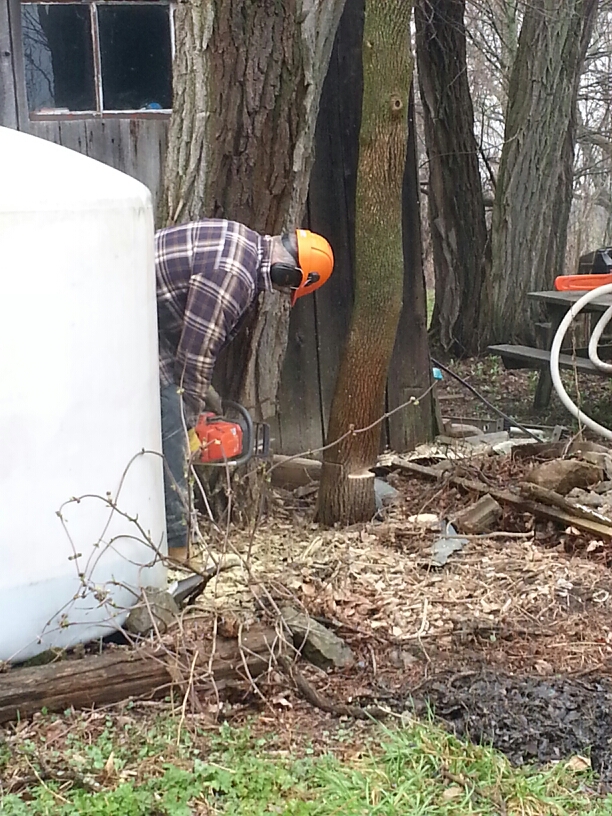
A friend coming to cut down a tree that’s shading the farm’s solar panels.
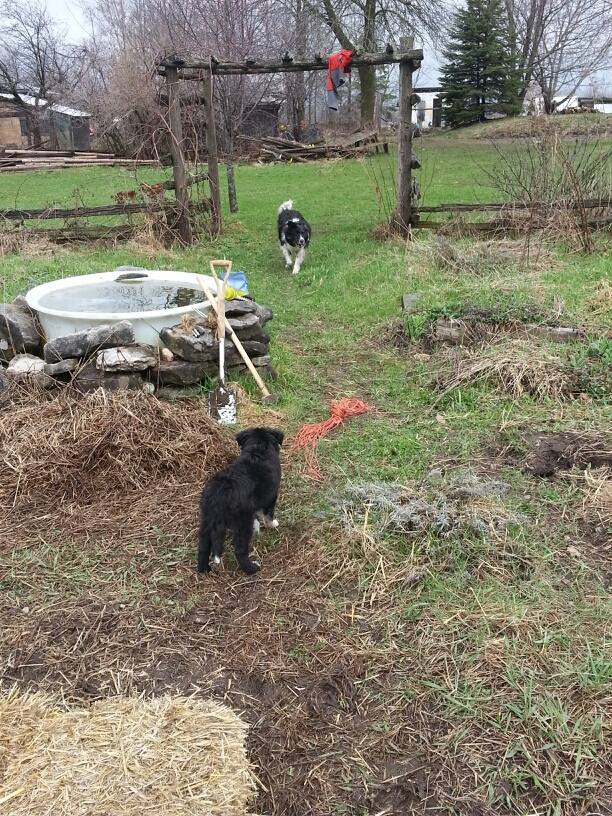
The obligatory game of fetch.
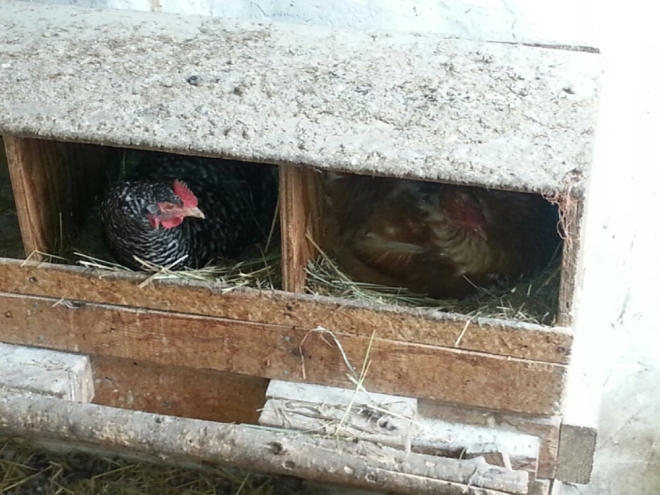
Chickens showing me their newest magic trick…
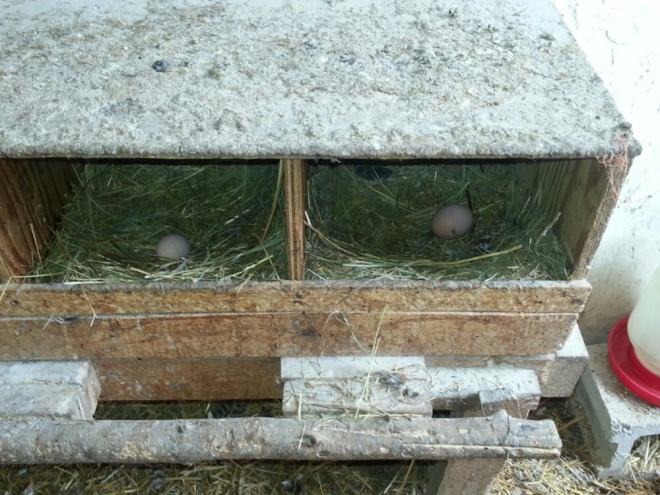
Tada!
In the afternoon, I spent a lot of time repairing a chimney pipe to a cabin on the property. Some guests are using it this weekend and we wanted to be able to warm it up. As I was taking the old pipe down however, a robin’s nest fell out. Five eggs tumbled out, with one cracking on the ground. As you may recall from a previous post, I dislike ruining nests very much. But it was too late. The nest was heavily disrupted and the eggs would never hatch.
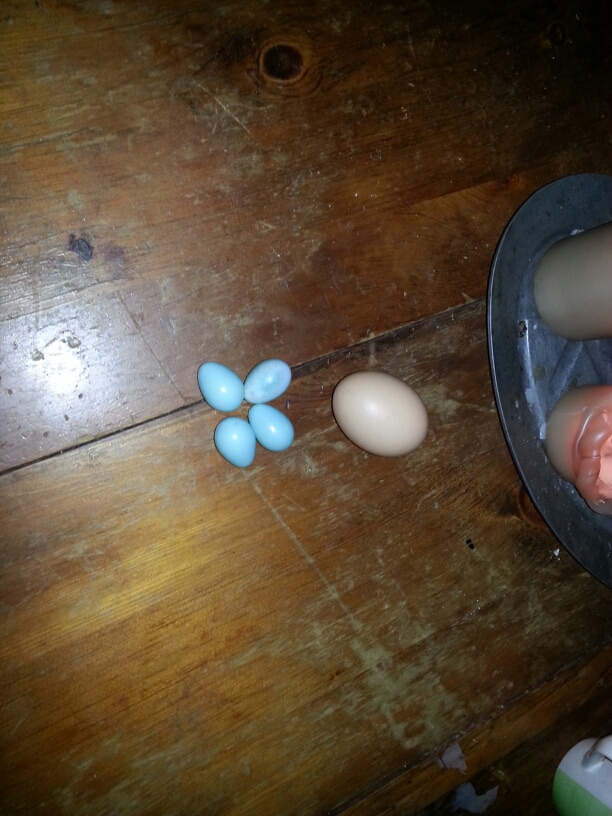
This is the size of the eggs. The white egg is a regular chicken egg.
I do have a plan for these eggs but I’m far too tired to go into it tonight. Tune in tomorrow!
Adam


